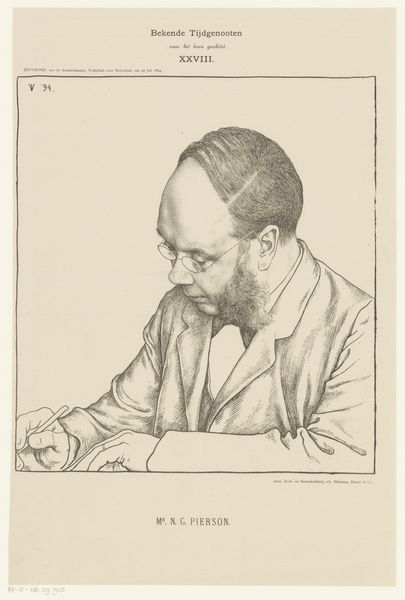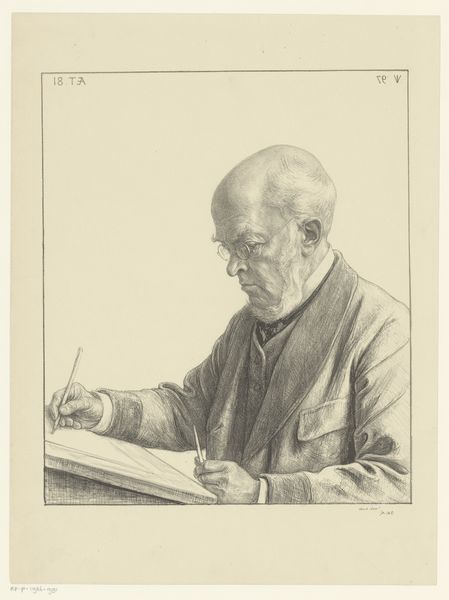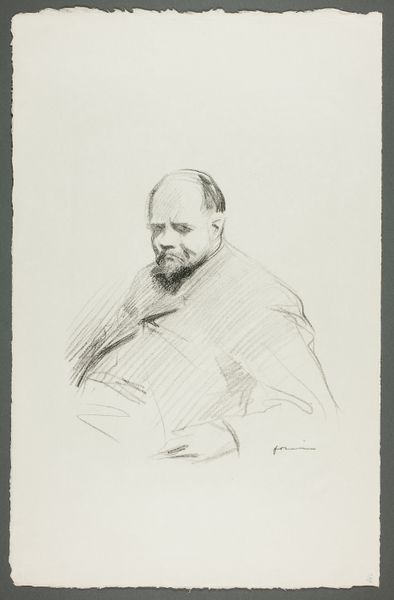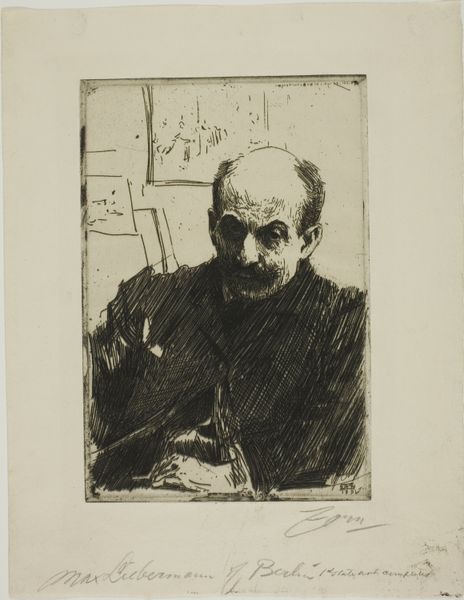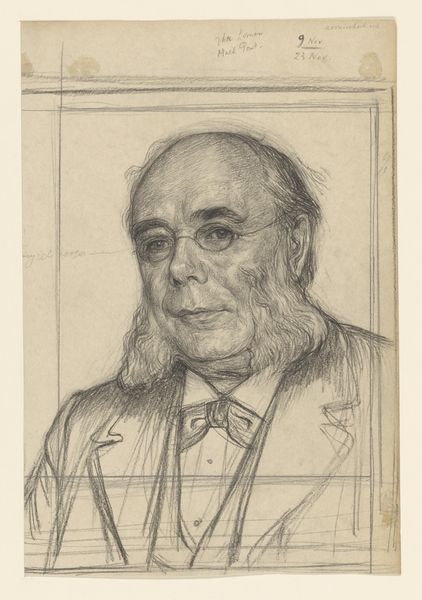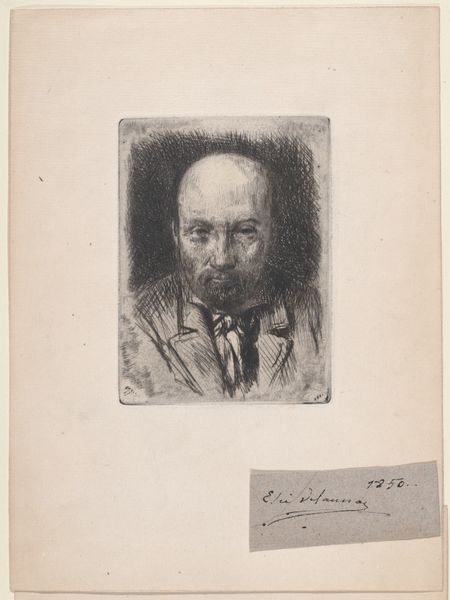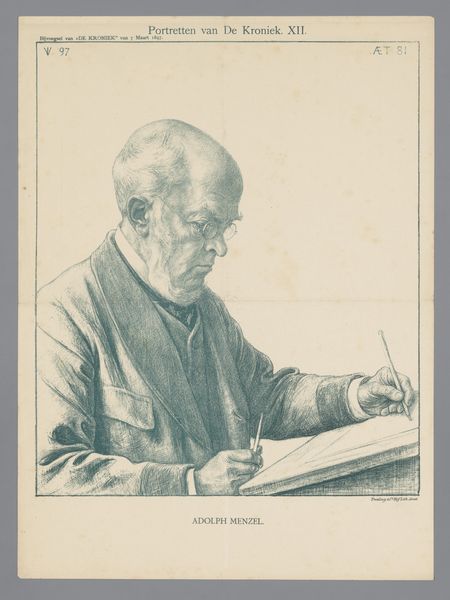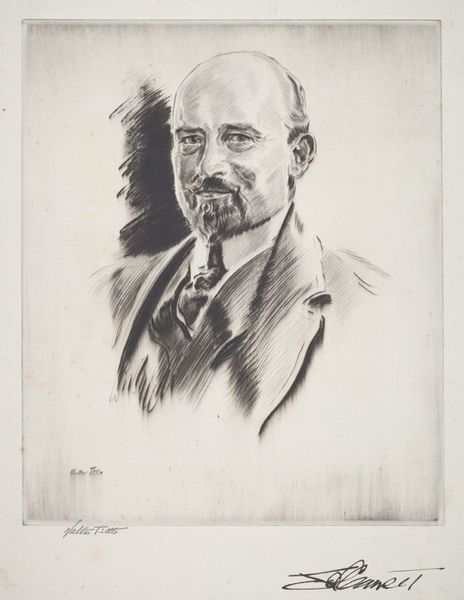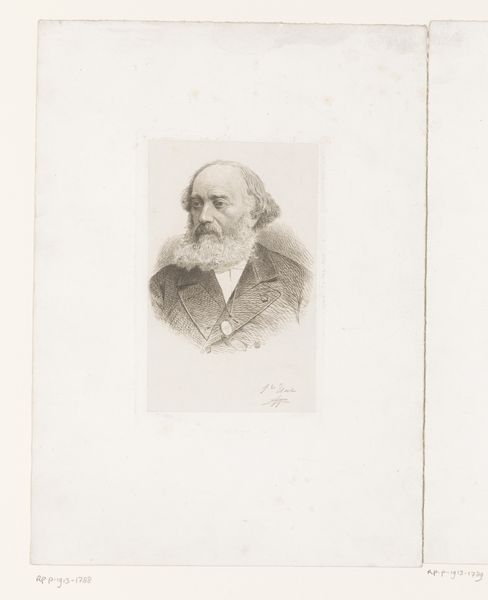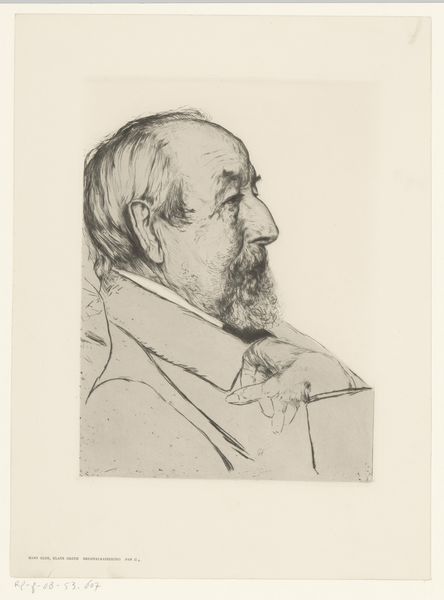
drawing, print, graphite
#
portrait
#
drawing
# print
#
pencil sketch
#
old engraving style
#
presentation photography
#
graphite
#
academic-art
#
realism
Dimensions: height 365 mm, width 300 mm
Copyright: Rijks Museum: Open Domain
Editor: This is a drawing from 1891 by Jan Veth, a portrait of Arnoldus Polak Kerdijk, done in graphite. The man is captured in such intense concentration. What visual language do you read in this portrait? Curator: The sitter's intense focus, manifested in his downward gaze and poised hand, evokes the archetype of the scribe or scholar – figures laden with cultural weight across centuries. Do you notice how the lines deepen around his eyes, drawing attention to the act of seeing, reading, and interpreting? Editor: Yes, and the shading seems to add to a pensive, almost melancholic mood. The graphite lines almost feel like they are etching thoughts onto paper. Curator: Precisely. Consider the psychological implications: the act of writing itself becomes a symbolic representation of shaping knowledge, memory, and even identity. This isn't simply a likeness; it is a carefully constructed image designed to communicate a particular idea of intellectualism and the weight of thought. Editor: So the choice of graphite and print is about more than just convenience, it contributes to that image. Do you think that explains why this style was favored for depicting intellectuals? Curator: Absolutely! Graphite, with its capacity for both precision and subtle gradation, is well-suited to render the nuances of character. Further, print, through its reproducibility, enabled wider dissemination of this carefully constructed image of intellect, shaping and reinforcing cultural values around knowledge. Editor: It’s fascinating to think about how the artist uses medium and composition to build on the symbolic value of intellectual labor. Curator: Indeed. By understanding these visual symbols, we can unlock not just the artistic merit, but also the complex cultural narratives embedded within this portrait and understand its continuous cultural legacy.
Comments
No comments
Be the first to comment and join the conversation on the ultimate creative platform.
